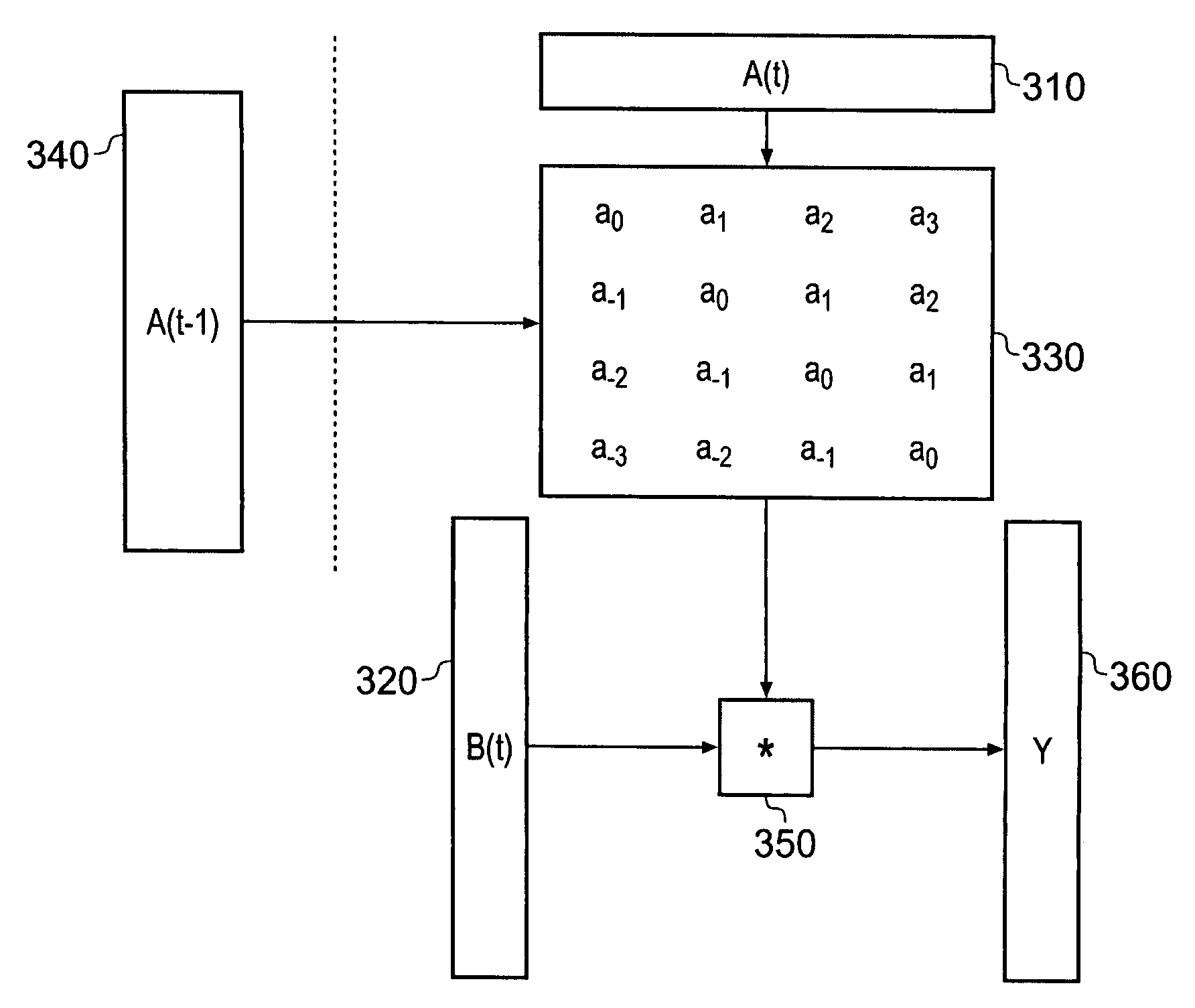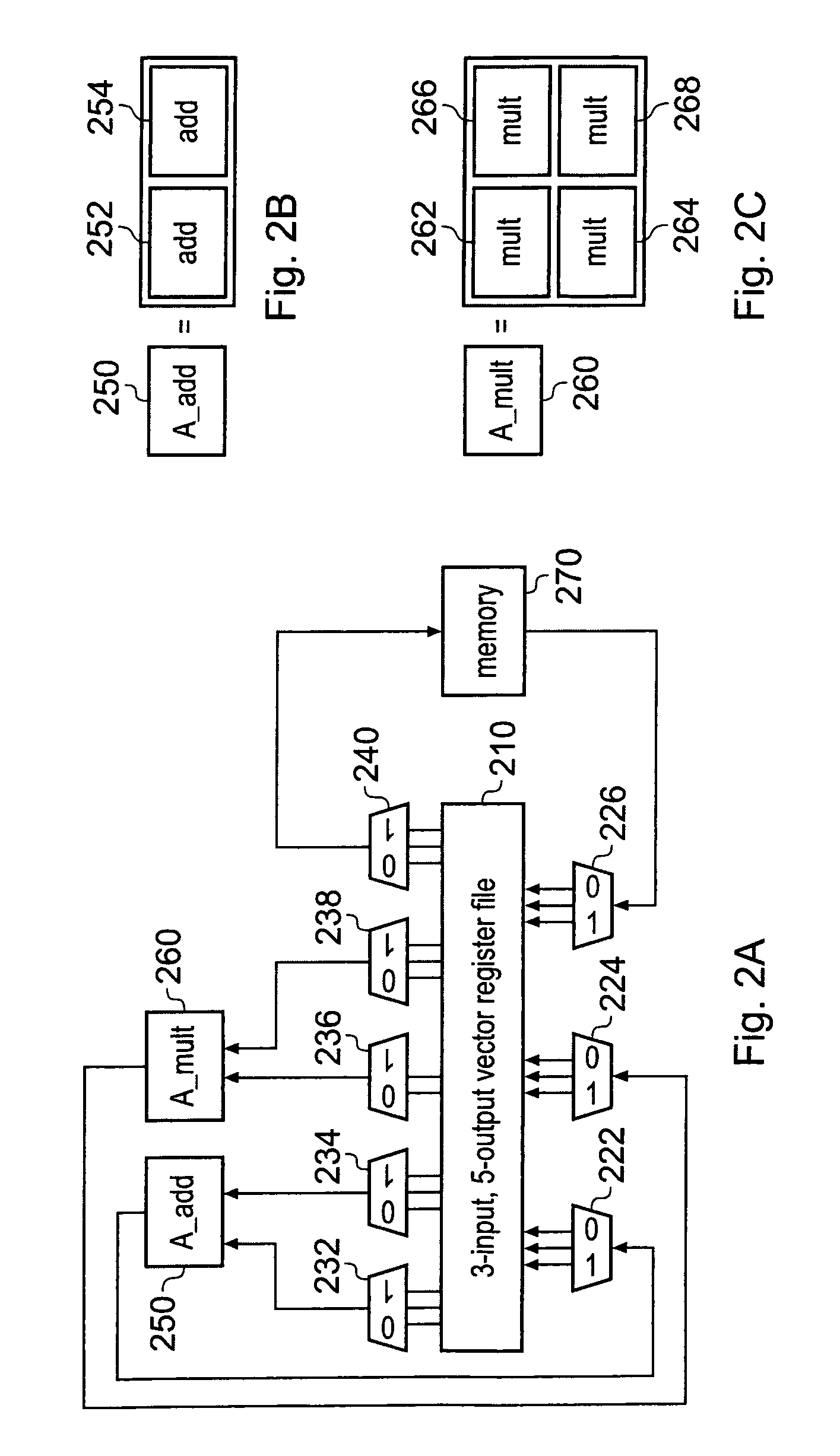Algebraic single instruction multiple data processing
a data processing and algebraic single instruction technology, applied in the field of data processing systems, can solve the problems of increasing complexity, reducing efficiency, and affecting the efficiency of data processing, and achieve the effect of simplifying program code and reducing the burden of repeatedly resetting
- Summary
- Abstract
- Description
- Claims
- Application Information
AI Technical Summary
Benefits of technology
Problems solved by technology
Method used
Image
Examples
Embodiment Construction
[0052]FIG. 1 schematically illustrates a data processing apparatus 100 according to the present technique. The arrangement comprises a main memory 110, a load store unit 120, an instruction decoder 130, data processing logic 140 having three functional units 142, 144, 146 and a register file 150.
[0053] The load store unit 120 is operable to load a program instruction from main memory 110. The program instruction is supplied to the instruction decoder 130, which decodes the program instruction and outputs a plurality of control signals to control the data processing apparatus to perform a processing operation in dependence upon the program instruction. The control signals from the instruction decoder 130 control the three functional units 142, 144, 146 to perform operations such as adds, multiplies and shifts to vector input operands that are read from the register file 150. Output values representing the results of the operations performed by the data processing logic can be writte...
PUM
 Login to View More
Login to View More Abstract
Description
Claims
Application Information
 Login to View More
Login to View More - R&D
- Intellectual Property
- Life Sciences
- Materials
- Tech Scout
- Unparalleled Data Quality
- Higher Quality Content
- 60% Fewer Hallucinations
Browse by: Latest US Patents, China's latest patents, Technical Efficacy Thesaurus, Application Domain, Technology Topic, Popular Technical Reports.
© 2025 PatSnap. All rights reserved.Legal|Privacy policy|Modern Slavery Act Transparency Statement|Sitemap|About US| Contact US: help@patsnap.com



